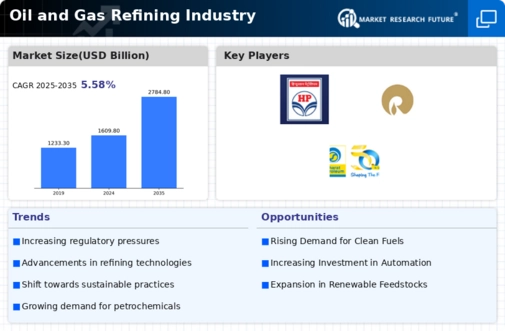Oil Gas Refining Industry Market Summary
As per MRFR analysis, the Oil and Gas Refining Market Size was estimated at 1618.03 USD Billion in 2024. The Oil and Gas Refining industry is projected to grow from 1708.35 USD Billion in 2025 to 2940.88 USD Billion by 2035, exhibiting a compound annual growth rate (CAGR) of 5.58 during the forecast period 2025 - 2035.
Key Market Trends & Highlights
The Oil and Gas Refining Sector is currently navigating a transformative phase characterized by sustainability and technological advancements.
- North America remains the largest market for oil and gas refining, driven by robust infrastructure and established industry practices.
- Asia-Pacific is emerging as the fastest-growing region, propelled by increasing energy demand and rapid industrialization.
- Hydro-Skimming continues to dominate as the largest refining segment, while Conversion is gaining traction as the fastest-growing segment.
- Market drivers such as regulatory compliance and the demand for clean fuels are shaping the industry's evolution towards sustainability.
Market Size & Forecast
| 2024 Market Size | 1618.03 (USD Billion) |
| 2035 Market Size | 2940.88 (USD Billion) |
| CAGR (2025 - 2035) | 5.58% |
Major Players
Saudi Aramco (SA), ExxonMobil (US), Royal Dutch Shell (NL), BP (GB), Chevron (US), TotalEnergies (FR), Petrobras (BR), Reliance Industries (IN), Valero Energy (US), Phillips 66 (US)


















Leave a Comment